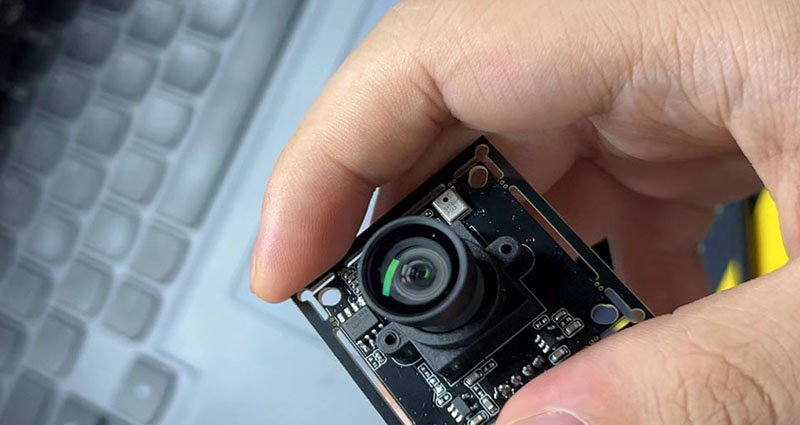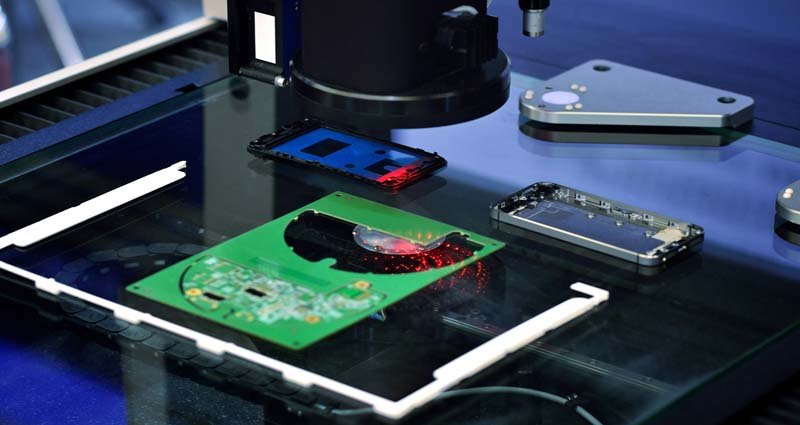The MIPI camera module is a popular choice for high-quality image capture in devices like smartphones, tablets, and handheld gadgets. MIPI is a standard protocol for mobile devices that controls communication between the device’s processor and its peripherals. The most recent iteration of MIPI, namely MIPI CSI-2 (Camera Serial Interface 2), facilitates high-speed data transfer rates and efficient power consumption, making it a popular choice for interfacing cameras with various embedded systems. In this article, we’ll cover the basics of a MIPI camera module and its output.
What’s A MIPI Camera Module?

MIPI camera module is a camera module that uses MIPI interface for data transmission. MIPI stands for Mobile Industry Processor Interface, a standard interface for smartphone cameras, tablets, and other mobile devices. The MIPI interface offers several advantages over other interfaces, including lower power consumption, higher data throughput, and smaller form factor.
In a MIPI camera module, the image sensor is connected to a processor or application processor through a MIPI interface. Image data is captured by the sensor and transmitted to the processor for further processing. MIPI camera modules are commonly used in mobile devices, the automotive industry, and some industries that require high-resolution imaging. These camera modules are also available in various configurations such as different resolutions, frame rates and interfaces to meet different applications and needs.
Components of A MIPI Camera Module
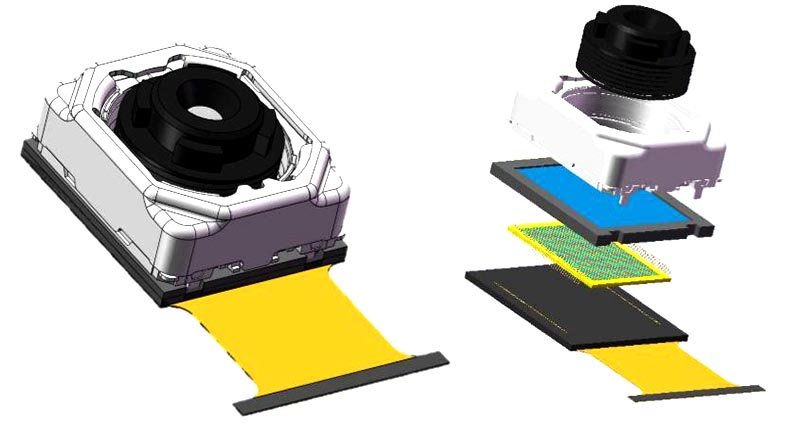
The main components of the MIPI camera module include:
- Image Sensor – The image sensor is the heart of the camera module. It captures an image or video and converts it into an electrical signal.
- MIPI Interface – MIPI is a standardized interface for data transfer between image sensors and processors. It consists of a set of data and clock lanes that carry image data.
- Lens Assembly – The lens assembly is responsible for focusing the light onto the image sensor. It usually consists of one or more lenses, and may include mechanical mechanisms for adjusting focus.
- Voltage Regulator – The voltage regulator provides regulated power to all components of the camera module, including the image sensor, processor, and MIPI interface.
- Signal processing unit – The signal processing unit consists of one or more ICs (Integrated Circuits) and is responsible for processing the image data received from the image sensor. It can perform functions such as image sharpening, noise reduction, white balance and color correction.
- Connector – The connector is used to connect the camera module to the device it is integrated with. It may include FPC (flexible printed circuit) connectors or other types of connectors.
These are the main components of a MIPI camera module, although some camera modules may contain additional components. The components used and their exact configuration may vary depending on the application and requirements of the camera module.
MIPI Camera Module Output
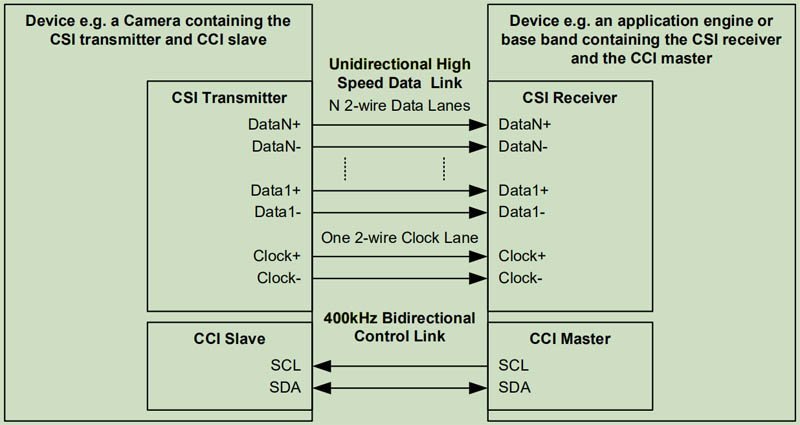
The MIPI camera module outputs a serial data stream transmitted over the CSI-2 interface. The data stream contains compressed image data encoded with a video codec such as H.264 or H.265. The video codec reduces the size of the image data by compressing it in real-time before transmitting it over the interface.
The output data rate of a MIPI camera module depends on various factors like the resolution of the image, the frame rate, and the compression used. For example, a 1080p video stream with H.264 compression and 30fps has an output data rate of around 100 Mbps. Similarly, a 4K video stream at 60fps with H.265 compression has an output data rate of around 600 Mbps.
The output data rate of a MIPI camera module is an essential factor to consider when selecting a camera module for a specific application. The host processor must process image data at the required rate to prevent delays or dropouts in the video stream.
Applications
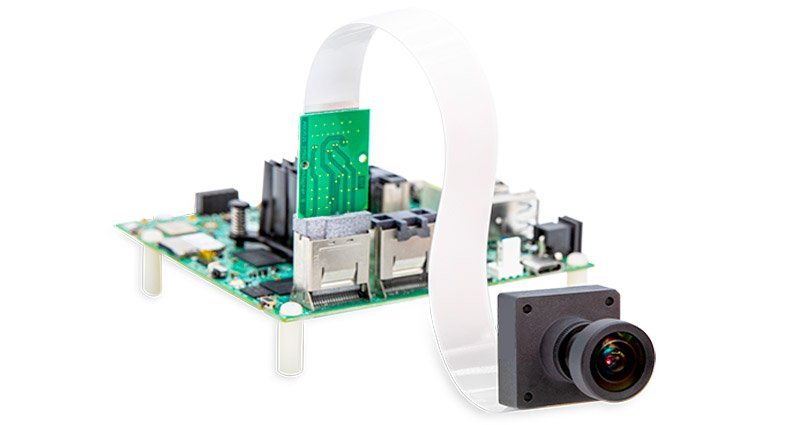
The MIPI camera modules find their application in diverse embedded systems like:
- Mobile devices: Smartphones and tablets use MIPI camera modules for their camera functionality.
- Automotive: MIPI camera modules adoption in cars with various applications like lane departure warning, parking assist, and rearview cameras.
- Industrial: Many industrial applications like machine vision, robotics, and medical imaging use MIPI camera modules.
How To Choose A Right One?
When choosing a MIPI camera module, the following factors should be considered:
- MIPI interface type: MIPI provides a variety of interface types, including CSI-2, D-PHY and C-PHY. Choose a camera module that is compatible with your device’s interface type.
- Image Sensor: The image sensor is the most important component in the camera module as it is responsible for capturing images or videos. Choose a sensor with a resolution that meets the resolution requirements of your application.
- Lens: The lens is responsible for focusing the light onto the image sensor. Choose a lens that is compatible with the image sensor and provides the desired field of view and focal length.
- Frame rate: If you need to capture fast-moving objects or high-quality video, you should consider the frame rate of the camera module. Check that the camera module can provide the desired frame rate at the desired resolution.
- Light sensitivity: If you need to capture images or videos in low-light environments, you should consider the light sensitivity of the camera module.
- Image processing functions: Some camera modules have functions such as autofocus, exposure control, white balance, and image stabilization. Consider these features if they are important to your application.
- Power Consumption: If you are using the camera module with a battery powered device, you should consider the power consumption of the camera module.
- Mechanical Dimensions: The mechanical dimensions of the camera module should be considered to ensure it physically fits into your device.
- Price: Consider the price of the camera module and make sure it is within your budget.
- Compatibility with operating system: Make sure the camera module is compatible with the operating system of the device you are using.
Conclusion
MIPI camera modules are an excellent choice for capturing high-quality image data in various embedded systems applications. The MIPI camera module’s output rate is influenced by factors such as resolution, frame rate, and compression. The MIPI CSI-2 interface efficiently transmits the image data from the camera to the host processor. The use of a serial interface reduces the number of wires required and allows high-speed data transfer. If you are planning to use a MIPI camera module, consider the output data rate and the host processor’s processing capability to ensure smooth operation of the system.

